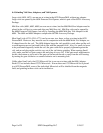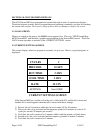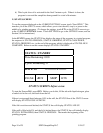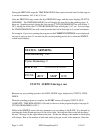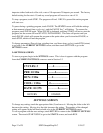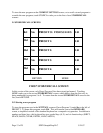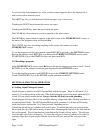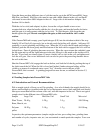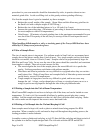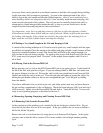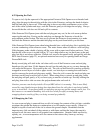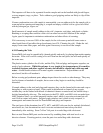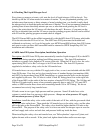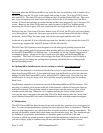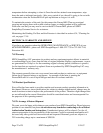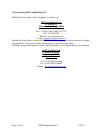Page 16 of 25 SPEX SamplePrep LLC 9.24.07
procedure for your own materials should be determined by trials; in practice almost no two
materials grind alike. Avoid overfilling vials as this greatly reduces grinding efficiency.
If at first the sample doesn’t grind as intended, try these strategies:
• Reduce the overall weight of the sample. (Some fibers and thin films may grind best in
the Small vial with a sample weight of 100-200 mg.)
• Reduce the size of the individual pieces to ¼ or 1/8 inch (6 to 3 mm).
• Increase the precooling time. (20 minutes of precooling is about the maximum necessary
for most samples to reach LN temperatures.)
• Grind longer. (30 minutes of actual grinding time is the maximum recommended for one
run, due to the LN capacity of the tub, but you can top off the LN and repeat the run if
necessary.)
When handling chilled samples or vials, or touching parts of the Freezer/Mill that have been
chilled by LN, always wear protective gloves.
6.22 Size of Sample Pieces
The size of sample pieces is important. For uniform results in Small vials we recommend most
samples be cut into pieces smaller than ¼ inch (6 mm). Very tough samples such as fresh bone
should be cut smaller, down to 1/8 inch (3 mm). Samples can be cut proportionately larger for
Mid-Size and Large Vials. In any case the size of the pieces should be controlled, and consistent
from sample to sample. There are several reasons for this:
• The more irregular the size of the sample pieces, the more difficult it is to predict the
results. Uniform procedures work better with uniform samples.
• Thin fibers and films in particular can very difficult to cryogrind unless they are cut into
small pieces first. Wads of long fibers and crumpled balls of film take up extra room and
can be elastic, even at LN temperatures.
• Tough samples in large pieces can be very difficult to grind, and in rare cases may
damage the vial. A large, wedge-shaped piece of bone or a tough polymer can act as a
wedge to push a moving impactor through the side of the polycarbonate tube.
6.23 Putting a Sample into the Vial at Room Temperature
Most Freezer/Mill samples do not have to be kept cold all the time, and can be loaded at room
temperature. To load a vial, first assemble it halfway by pushing an end-plug into a center
cylinder. Add the sample and impactor to the vial, and close it with the other end-plug. Shake
the vial to make sure the impactor has room to move back and forth.
6.24 Putting a Cold Sample into the Vial and Keeping it Cold
Some samples must be kept cold, such as plant or animal tissue being prepared for RNA
extraction. When a sample is cold, and must be kept cold throughout the grinding process, the
loading procedure is more elaborate.
Assemble a center cylinder and end-plug, as in 6.23, then chill the end-plug and about an inch of
the cylinder in a shallow liquid nitrogen bath. The vial racks with the 6870L and 6870S



